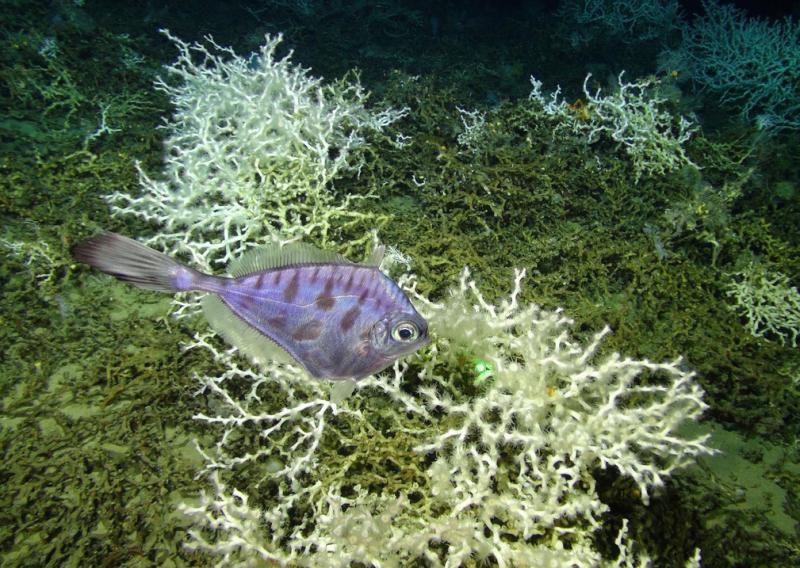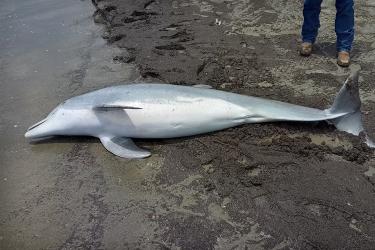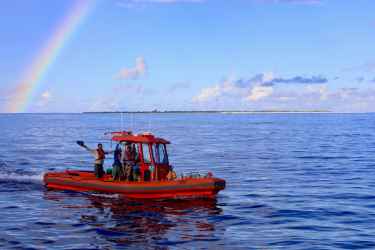NOAA Fisheries just released the Deep Sea Coral Research and Technology Program 2018 Report to Congress (PDF, 22MB). The deep sea is the largest habitat on Earth, and the least well known. This new report highlights the exciting discoveries of never-before-seen deep-sea coral habitats and new species found during the past two years (fiscal years 2016 and 2017), ranging from the middle of the Pacific Ocean to the Gulf of Mexico. It describes research activities funded by the Program to meet NOAA’s mandate to identify, study, and monitor deep-sea coral areas.
Deep-sea coral habitats occur in every U.S. region, providing important ecological and fisheries benefits. NOAA’s Deep Sea Coral Research and Technology Program, within NOAA Fisheries/Office of Habitat Conservation, uses innovative partnerships to leverage resources and provide the information needed to conserve deep-sea coral habitats. The Program was established by the Magnuson-Stevens Fishery Conservation and Management Act (MSA §408), to identify, locate, and map deep-sea coral habitat in consultation with U.S. regional fishery management councils. The MSA-requires a biennial report to Congress summarizing the steps taken by NOAA to identify, monitor, and protect deep-sea coral areas, including the Program’s research activities and results. The Program engages with the nation’s eight regional fishery management councils and collaborates on research with other federal agencies, international partners, and nongovernmental and academic scientists.

Report Findings
This Report to Congress presents an overview of the Program’s science activities conducted with numerous partners in 2016 and 2017. These activities include major fieldwork initiatives in the U.S. Pacific Islands and Southeast U.S., research within NOAA sanctuaries on the West Coast, targeted analyses of data, outreach, and expansion of the nation’s most comprehensive online database of deep-sea corals and sponges.

The Program collaborates with other NOAA programs and offices, such as National Marine Sanctuaries, Ocean Exploration and Research, Fisheries science centers and regional offices, the National Centers for Coastal Ocean Science, and the National Centers for Environmental Information. Given the logistically challenging and expensive nature of deep-sea research, partnerships among these programs and offices have been and continue to prove essential to our shared success. Exploration, research, analysis, and management activities made possible by these collaborations are critical to understanding and managing deep-sea corals and other ocean resources that support a healthy ocean economy.



